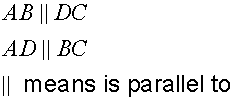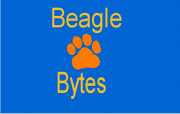Quadrilaterals
A polygon is a flat surfaced shape.
A quadrilateral is a four-sided polygon.
Rectangle
A rectangle is a quadrilateral whose opposite sides are equal and parallel.
All the angles of a rectangle are right angles.

AB = DC and AD=BC

A rectangle has two axes of line symmetry.
It has rotational symmetry of order 2
i.e. ½ turn symmetry

The diagonals of a rectangle are equal and bisect each other.
(Bisect means cuts in half)

AC = BD.
OA=OB=OC=OD
Square
A square is a special rectangle.
It is a rectangle with all its sides equal.
AB ll CD and AD ll BC
AB=BC=CD=DA
A square has four axes of line symmetry.
It has rotational symmetry of order 4
i.e. ¼ turn symmetry

The diagonals of a square
(i) bisect the angles of the square.
(ii) bisect each other at right angles.
(iii) bisect the corner angles.
Area of rectangles and squares
Kite

A kite is a quadrilateral with one axis of line symmetry.
It has no rotational symmetry.
A kite has two pairs of adjacent sides equal.

an inverted kite

The diagonals cross at right angles, but do not bisect each other.

Rhombus
A rhombus is a special kite with two axes of symmetry.
It has rotational symmetry of order 2
i.e. ½ turn symmetry

The diagonals of a rhombus bisect each other at right angles.
The diagonals of a rhombus bisect the corner angles.
The opposite sides of a rhombus are parallel.
All the sides are equal, and opposite angles are equal.
Parallelogram
A parallelogram is a quadrilateral with no axis of line symmetry.
It has rotational symmetry of order 2
i.e. ½ turn symmetry

The opposite sides of a parallelogram are equal and parallel.
The opposite angles of a parallelogram are equal.
Trapezium

A trapezium has one pair of parallel sides.
It has no rotational symmetry.
An ordinary trapezium has no axis of line symmetry
An isosceles trapezium has one axis of line symmetry
Ordinary trapezium

Isosceles trapezium



